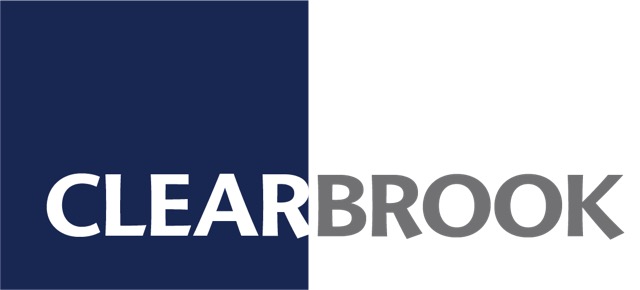Domestic Equity
- Equity markets rebounded in June, as the Federal Reserve (Fed) signaled that it may be open to future interest-rate cuts. As a result of dovish Fed comments, the market is now pricing in at least one rate cut in July. In addition, the markets began pricing in possible progress in trade negotiations between the U.S. and China as President Trump was to meet with President Xi at the G20 summit in Osaka Japan on June 29th.
- As a result, U.S. equity markets rallied throughout most of June and the S&P 500 reached all-time highs ending the month at 7.0%. Year to date, the S&P 500 is up 18.5% with Growth leading the way (+21.5%) and Value somewhat behind, (+16.2%). Large Caps generally out-performed Small Caps as multi-national companies with overseas exposure provided a tail wind.
- Leading the markets higher in the month were the Materials and Energy Sectors; Materials because of trade optimism and Energy with OPEC production cuts, which have been extended for 9 months. The worst performing sectors were Real Estate and Utilities. While both were up, their interest rate sensitivity caused them to lag with rate cut expectations.
International Equity
- International equities followed domestic markets higher as expectations for improved market liquidity increased. For the month, EAFE was up 5.9% (in USD terms), also more than making up all of the prior month’s losses. Despite continued challenges with Brexit and the upcoming departure of Mario Draghi as ECB President, EAFE is up 14.0% for the year.
- Economic momentum continues to be weak as the Eurozone Manufacturing PMI came in at 47.6 in June
2019, slightly below the preliminary estimate of 47.8 and 47.7 in the prior month. This was the fifth straight month of contraction in factory activity, amid ongoing global trade tensions and political uncertainties. Output, new orders and export orders continued to decline. Input costs fell for the first time in over three years,
while output prices rose slightly. - Emerging markets also staged a strong rebound being up 6.2%, but still lag behind the U.S. on a MTD and YTD basis. Concern surrounding the impact of China’s stimulus program in the face of lingering tariff uncertainty has kept EM performance constrained. Year to date, EM is up 10.6%.
Fixed Income
- Treasury yields continued to fall across maturities, and the curve steepened, as short-end rates declined by over 15bps. Solid job market data persisted, as the unemployment rate held at 3.6%, though the Core Personal Consumption Expenditures Price Index (Core PCE), the Fed’s preferred inflation measure, came in at 1.6%, below its 2% target. The 3-month Treasury-Bill (2.10%) continues to out-yield the 10-year Treasury Note (2.01%), despite a nearly 25bps drop in the 3-month T-Bill yield during the month. As a result, real rates are just slightly positive and declining.
- Investment-grade corporate spreads tightened by 13bps, from 128bps to 115bps, retracing much of the spread widening that occurred during May. High-yield corporate spreads tightened by 56bps, from 433bps to 377bps, as equity-market strength supported spreads.
- Securitized sectors lagged corporates during the month, with both asset-backed securities (ABS) and commer- cial mortgage backed securities (CMBS) delivering negative excess returns, as investors’ favored corporate risk amid the rally in spreads.
Economics
- The global economy has been showing signs of stalling, particularly in the manufacturing sector. The durable goods component of factory orders in the U.S. declined in May, which has forecasters projecting a decline of 0.3% in the ISM Manufacturing Index. We are seeing similar signs in China, as China’s Manufacturing PMI is in contraction at 49.4 and the employment in the sector has been declining since late 2018. Europe is experiencing a slowdown as business confidence and manufacturing are deteriorating as well. The global economic slowdown and the inability to get inflation levels above the targeted 2.0%, expectations are for the world central banks to beginning easing during 2H 2019.
- In the U.S., Fed Chairman Jerome Powell and Vice Chairman Richard Clarida both suggested last month the central bank could cut interest rates if trade battles slow economic activity. St. Louis Fed President James Bullard stated in June, the uncertainty caused by tariffs and subdued inflation could prompt the central bank to lower rates. The fed fund futures market is showing a 79% chance of a 0.25% rate cut at the Fed’s July 31 meeting.
- In Europe, the European Central Bank left interest rates unchanged in June and extended the period it expects rates to remain unchanged till 2H 2020. The ECB also announced the terms of its third round of targeted longer-term refinancing operations. The rate in each operation to be set 10 basis points above the average rate applied to the Euro-system’s main refinancing operations over the life of the respective operation.
- In Asia, the Caixin China PMI survey’s business activity index fell from 54.5 in April to 52.7 in May, with the manufacturing PMI survey, showing its headline index unchanged at 50.2. Combined, these points resulted in the composite index falling from 52.7 in April to a trailing three-month low of 51.5 in May. Service sector respondents reported weaker increases in both new orders and new export orders in May. Measures of employment and business sentiment also weakened.

